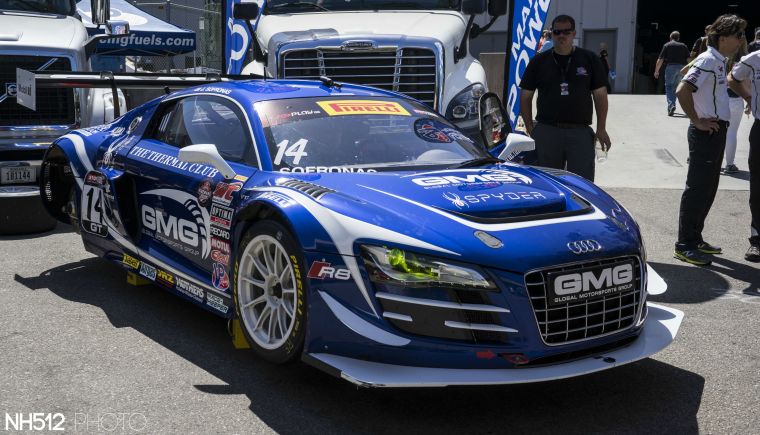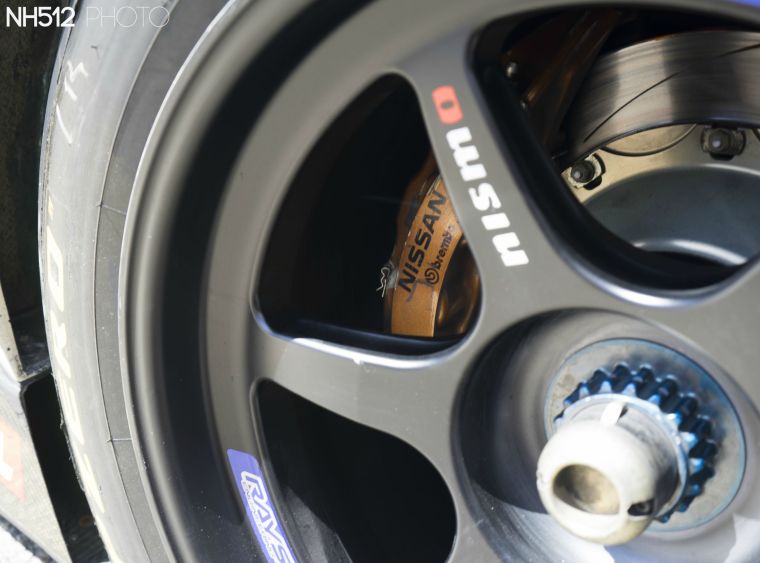Brembo Carbon Materials (CCM, CCM-R, and racing carbon)
Brembo Offers 3 Types of Carbon Based Discs:
- Carbon Ceramic (CCM): street use
- Carbon Ceramic (CCM-R): street and track use
- Carbon-Carbon: race use
Original Equipment Carbon Ceramic Material (CCM):
CCM discs supplied for the OEM are designed to offer significant weight savings over typical cast iron OEM discs while offering outstanding performance and very long life under typical street use. However, OEM CCM discs have limitations for serious performance driving and dedicated track use.
OEM CCM discs do not wear in the same way as cast iron discs. The life on CCM discs is determined by the loss of disc mass as the material oxidizes. This cannot be verified by simply measuring the overall disc thickness like traditional iron discs. Each disc assembly is weighed after assembly and then the minimum allowable weight is permanently etched into the bell. In order to check the weight after use, a cleaning procedure must be performed before checking the weight.
An exhaustive on-road and on-track test program is needed during vehicle development in order to manage airflow to the discs in order to provide enough cooling to achieve satisfactory component life. Oxidation increases rapidly with temperature and it is for this reason that extended high temperature use such as experienced on the race track dramatically reduces the discs life.
OEM CCM discs are designed to be used with very specific brake pad materials. While there are other pad materials supplied on the market by various pad manufacturers claiming to be “CCM friendly”, there is currently no established validation process for such materials. Pad materials developed for cast iron brake discs will have considerably different results when used on CCM if the various factors are not considered. Pads used with CCM discs also have much greater surface area than would be present in a similar performing cast-iron system which somewhat offsets the weight savings of the disc.
- Production Process Time: Relatively quick production time (for a carbon-based material), approximately 4 weeks (1 month).
Brembo Racing Carbon-Carbon:
Brembo carbon-carbon materials are used in the top levels of professional motorsports in such racing categories as open wheel (i.e. Formula 1 and IndyCar) and sportscar racing (i.e. LeMans and LMP1) amongst others. The latest motorsport carbon-carbon discs offer stable performance over a wide temperature range, are extremely lightweight, and are highly wear resistant.
While many companies market high performance and racing carbon materials, there are only a few manufacturers who sell carbon-carbon brake materials to the top levels of professional motorsports. These are: Brembo, Carbone Industrie, and Hitco (a subsidiary of the Brembo SGL Group). Brembo supplied over 60% of the Formula 1 field in 2014 and is the sole supplier for IndyCar, Along with supplying brake systems to both factory run Porsche and Audi LMP1 efforts in the FIA WEC (World Endurance Championship) for 2015. It is quite normal for an LMP1 car racing at the 24 hours of LeMans to finish the endurance race without any disc or pad change.
Racing carbon-carbon systems differ from other brake systems in that they utilize a pad that is also made of carbon-carbon material very similar to the disc material. There are specific carbon-carbon formulations for the disc and pads that can be chosen to suit the system to the needs of the racing series, car, track, or driver.
Wear occurs in a carbon-carbon system both through material thickness reduction, as well as by oxidation. During a braking event, the temperatures reached in a carbon-carbon system can be well in excess of those seen in a racing cast-iron system, but the airflow management must be such that the temperatures are brought down significantly to avoid excessive oxidation. Racing carbon-carbon systems do not work well at low temperatures, and are for motorsports use only.
- Production Process Time: Approximately 28 weeks (7 months) for production from start to finish.

Brembo CCM-R discs.
Brembo CCM-R:
Brembo created the CCM-R material by applying the knowledge gained through developing and supplying carbon-based brake materials for both OEM road use and racing applications. Brembo CCM-R discs are sized and cross-drilled similar to the OEM CCM material discs, however, the base material, production process and construction is more in-line with Brembo carbon-carbon racing discs. CCM-R discs were developed with high-performance and racing use in mind.
Debut of CCM-R for the Nissan GT-R (R35)
Brembo CCM-R material comparisons to CCM:
- Increased material strength, thermal conductivity, and coefficient of friction
- Reduced temperatures
- Significant increase in disc life, especially under track conditions
- Density similar to CCM, but potential for reduced weight due to ability to reduce disc and pad dimensions
- Wear extent can be determined by visual inspection
CCM-R discs and pads are delivered pre-bedded with a specific friction material for street and track use which will operate in a wide temperature range. If the customer is using the vehicle for primarily track or race use, a race-only material can be specified.
- Production Process Time: Approximately 28 weeks (7 months) for production from start to finish.
Pre-Bedding:
Pre-bedding is the process of transferring pad material to the disc surface in a controlled environment. It is critical to have a transfer layer of pad material on the CCM-R disc to generate friction. Due to the material strength of CCM-R and the high level of surface hardness, it takes considerable pressure and temperature to transfer pad material onto the disc surface. This is done on a high inertia brake dynamometer using very specific computer controlled programs at the Brembo factory.
Representative Component Weights:
- Brembo 355x32mm, 53mm annulus Cast-Iron 72-vane disc ring: 16.5 lbs
- Brembo 360x32mm, 64mm annulus CCM-R disc ring: 7.5 lbs
- Brembo 355x32mm, 53mm annulus Carbon-Carbon disc ring: 5.8 lbs
Typical Pad Weights – For Perspective:
- Brembo 6-piston 26mm thick Cast-Iron disc race pad: 1.8 lbs
- Brembo 6-piston 17mm thick CCM-R disc pad: 2.7 lbs
- Brembo 6-piston 26mm thick Carbon-Carbon race pad: 0.7 lbs



















